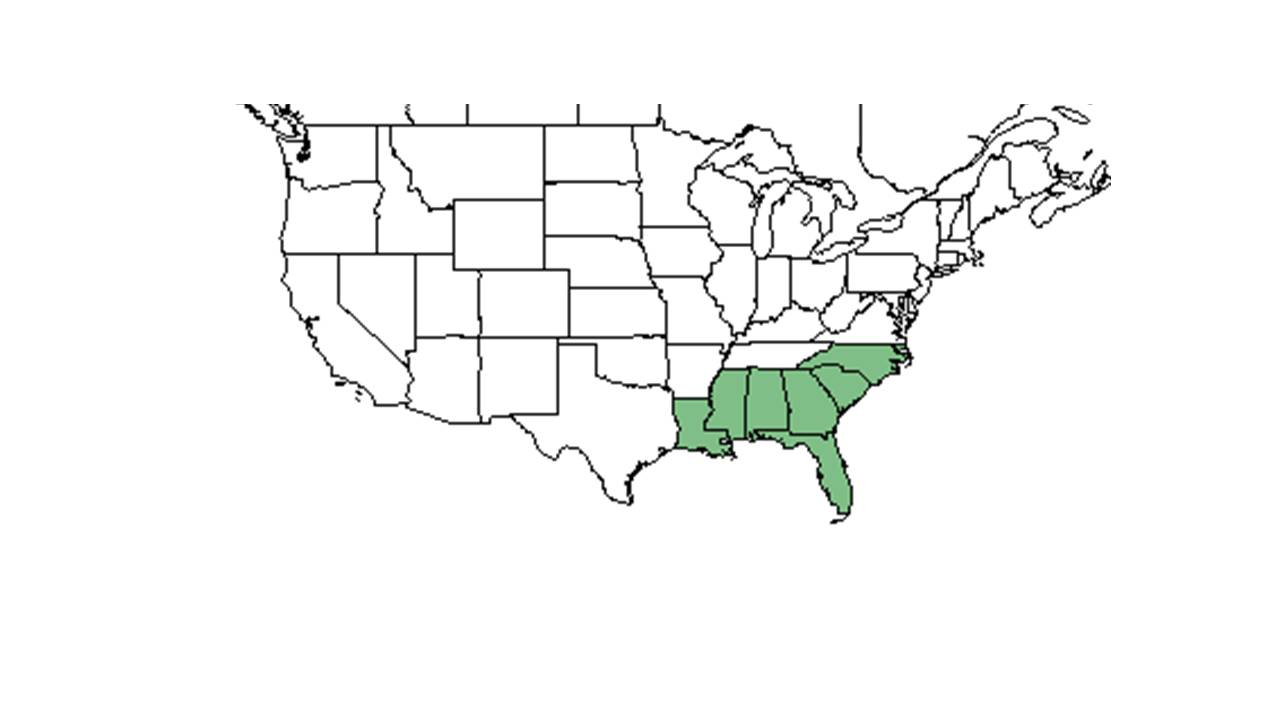Difference between revisions of "Indigofera caroliniana"
(→Description) |
|||
| Line 24: | Line 24: | ||
==Ecology== | ==Ecology== | ||
===Habitat=== <!--Natural communities, human disturbed habitats, topography, hydrology, soils, light, fire regime requirements for removal of competition, etc.--> | ===Habitat=== <!--Natural communities, human disturbed habitats, topography, hydrology, soils, light, fire regime requirements for removal of competition, etc.--> | ||
| + | |||
| + | It is found along the edges of flatwoods, mixed woodlands, upland ridges, deciduous forests, slash pine-hardwood stands, sand pine scrub, and sand ridges (FSU Herbarium). This species grows in sand and sandy loam in open areas (FSU Herbarium). This species also occurs outside of its natural environments in human disturbed areas such as open fields, bulldozed scrub oak sand hills, clobbered slash pine and hardwood fields, and wood pastures (FSU Herbarium). | ||
| + | |||
===Phenology=== <!--Timing off flowering, fruiting, seed dispersal, and environmental triggers. Cite PanFlora website if appropriate: http://www.gilnelson.com/PanFlora/ --> | ===Phenology=== <!--Timing off flowering, fruiting, seed dispersal, and environmental triggers. Cite PanFlora website if appropriate: http://www.gilnelson.com/PanFlora/ --> | ||
===Seed dispersal=== | ===Seed dispersal=== | ||
Revision as of 20:12, 13 July 2015
| Indigofera caroliniana | |
|---|---|
Error creating thumbnail: Unable to save thumbnail to destination
| |
| Scientific classification | |
| Kingdom: | Plantae |
| Division: | Magnoliophyta - Flowering plants |
| Class: | Magnoliopsida – Dicotyledons |
| Order: | Fabales |
| Family: | Fabaceae ⁄ Leguminosae |
| Genus: | Indigofera |
| Species: | I. caroliniana |
| Binomial name | |
| Indigofera caroliniana Mill. | |

| |
| Natural range of Indigofera caroliniana from USDA NRCS Plants Database. | |
Contents
Description
Common Name: Carolina indigo
Distribution
Ecology
Habitat
It is found along the edges of flatwoods, mixed woodlands, upland ridges, deciduous forests, slash pine-hardwood stands, sand pine scrub, and sand ridges (FSU Herbarium). This species grows in sand and sandy loam in open areas (FSU Herbarium). This species also occurs outside of its natural environments in human disturbed areas such as open fields, bulldozed scrub oak sand hills, clobbered slash pine and hardwood fields, and wood pastures (FSU Herbarium).
Phenology
Seed dispersal
Seed bank and germination
Fire ecology
Pollination
Mark Deyrup at Archbold Biological Station observed these Hymenoptera species on Indigofera caroliniana
Halictidae: Lasioglossum placidensis
Megachilidae: Anthidiellum perplexus
Use by animals
Deyrup observed these bees, Anthidiellum notatuin rufimaculatum, A. perplexum,Megachile albitarsis on I. caroliniana.[1]
Diseases and parasites
Conservation and Management
Cultivation and restoration
Photo Gallery
References and notes
- ↑ Deyrup, M. J. E., and Beth Norden (2002). "The diversity and floral hosts of bees at the Archbold Biological Station, Florida (Hymenoptera: Apoidea)." Insecta mundi 16(1-3).